The Microgrid Technology market is expected to grow from USD 14.7 billion in 2022 to USD 46.0 Billion by 2032, at a CAGR of 12.10% during the forecast period 2023-2032.
A microgrid is a self-contained grid that utilises renewable energy, batteries for energy storage and generators to generate power. Microgrids can complement the national grid or work independently from it, providing communities with access to more endurable and resilient energy supplies. With the latest technology innovations like 5G connectivity, Artificial intelligence and IoT systems, can monitor, manage, and connect renewable sources and ensure a more efficient, trustworthy, and sustainable microgrid infrastructure. Microgrids are low-voltage power systems with small-scale, dispersed energy sources, storage devices and controllable loads. They are used to connect to the leading power network or are islanded in a controlled coordinated way.
The driving factors of the market growth are Increased demand for dedicated and secure power supply in industrial and commercial industries globally, associated with government steps to lower carbon footprint, is anticipated to fuel the microgrid market development. Similarly, the fast adoption of software across various end-user segments, such as industrial, commercial, healthcare, and government, to manage and control distributed energy resources with integrated weather and load forecasting is also anticipated to foster the market during the projection years.
This study delivers a comprehensive analysis of type, application, end-user, and region. The type segment includes DC Microgrids, AC Microgrids, and Hybrid. The AC microgrids segment holds the largest market share in 2022 due to AC microgrids mean the ac power supply in a distribution network. They can be readily connected to a current grid utility without special requirements like converters and their control approaches. The connectivity segment includes off-grid connected and grid connected. The grid connected segment holds the largest market share in 2022 due to with a grid-connected system, when the renewable energy system generates better electricity than the use at that moment, the electricity goes onto the electric grid for the utility to use elsewhere. The end user segment includes healthcare, remote, commercial & industrial, utility, government, and others. The remote segment holds the largest market share in 2022 due to there is a growing need in remote areas, a bottleneck for Military bases, and strict government initiatives to lower carbon footprints. In expansion, High installation, and maintenance costs for microgrids.
The market has been divided into North America, Europe, Asia-Pacific, Middle East & Africa, and South America. Asia-Pacific holds the largest market share due to the high-power need and governments' stimulation to integrate renewables in the power generation mix in multiple Asian countries, the countries are encouraged to look for more microgrid installations.
Some of the notable players in the market are General Electric Company, Eaton Corporation PLC, Schneider Electric SE, Hitachi Energy Ltd, and Siemens AG.
Report Description:
1. Introduction
1.1. Objectives of the Study
1.2. Market Definition
1.3. Research Scope
1.4. Currency
1.5. Key Target Audience
2. Research Methodology and Assumptions
3. Executive Summary
4. Premium Insights
4.1. Porter’s Five Forces Analysis
4.2. Value Chain Analysis
4.3. Top Investment Pockets
4.3.1. Market Attractiveness Analysis by Type
4.3.2. Market Attractiveness Analysis by Connectivity
4.3.3. Market Attractiveness Analysis by End-User
4.3.4. Market Attractiveness Analysis by Region
4.4. Industry Trends
5. Market Dynamics
5.1. Market Evaluation
5.2. Drivers
5.2.1. Growing Requirement of Clean Energy is Promoting the Adoption of Smart Grids Initiatives
5.3. Restraints
5.3.1. High Costs of Maintenance
5.4. Opportunities
5.4.1. Technical Advancement
6. Global Microgrid Technology Market Analysis and Forecast, By Type:
6.1. Segment Overview
6.2. DC Microgrids
6.3. AC Microgrids
6.4. Hybrid
7. Global Microgrid Technology Market Analysis and Forecast, By Connectivity
7.1. Segment Overview
7.2. Off-grid Connected
7.3. Grid Connected
8. Global Microgrid Technology Market Analysis and Forecast, By End-User
8.1. Segment Overview
8.2. Healthcare
8.3. Remote
8.4. Commercial & Industrial
8.5. Utility
8.6. Government
8.7. Others
9. Global Microgrid Technology Market Analysis and Forecast, By Regional Analysis
9.1. Segment Overview
9.2. North America
9.2.1. U.S.
9.2.2. Canada
9.2.3. Mexico
9.3. Europe
9.3.1. Germany
9.3.2. France
9.3.3. U.K.
9.3.4. Italy
9.3.5. Spain
9.4. Asia-Pacific
9.4.1. Japan
9.4.2. China
9.4.3. India
9.5. South America
9.5.1. Brazil
9.6. Middle East and Africa
9.6.1. UAE
9.6.2. South Africa
10. Global Microgrid Technology Market-Competitive Landscape
10.1. Overview
10.2. Market Share of Key Players in the Microgrid Technology Market
10.2.1. Global Company Market Share
10.2.2. North America Company Market Share
10.2.3. Europe Company Market Share
10.2.4. APAC Company Market Share
10.3. Competitive Situations and Trends
10.3.1. Product Launches and Developments
10.3.2. Partnerships, Collaborations, and Agreements
10.3.3. Mergers & Acquisitions
10.3.4. Expansions
11. Company Profiles
11.1. General Electric Company
11.1.1. Business Overview
11.1.2. Company Snapshot
11.1.3. Company Market Share Analysis
11.1.4. Company Product Portfolio
11.1.5. Recent Developments
11.1.6. SWOT Analysis
11.2. Eaton Corporation PLC
11.2.1. Business Overview
11.2.2. Company Snapshot
11.2.3. Company Market Share Analysis
11.2.4. Company Product Portfolio
11.2.5. Recent Developments
11.2.6. SWOT Analysis
11.3. Schneider Electric SE
11.3.1. Business Overview
11.3.2. Company Snapshot
11.3.3. Company Market Share Analysis
11.3.4. Company Product Portfolio
11.3.5. Recent Developments
11.3.6. SWOT Analysis
11.4. Hitachi Energy Ltd.
11.4.1. Business Overview
11.4.2. Company Snapshot
11.4.3. Company Market Share Analysis
11.4.4. Company Product Portfolio
11.4.5. Recent Developments
11.4.6. SWOT Analysis
11.5. Siemens AG.
11.5.1. Business Overview
11.5.2. Company Snapshot
11.5.3. Company Market Share Analysis
11.5.4. Company Product Portfolio
11.5.5. Recent Developments
11.5.6. SWOT Analysis
List of Table
1. Global Microgrid Technology Market, By Type, 2019-2032 (USD Billion)
2. Global DC Microgrids Microgrid Technology Market, By Region, 2019-2032 (USD Billion)
3. Global AC Microgrids Microgrid Technology Market, By Region, 2019-2032 (USD Billion)
4. Global Hybrid Microgrid Technology Market, By Region, 2019-2032 (USD Billion)
5. Global Microgrid Technology Market, By Connectivity, 2019-2032 (USD Billion)
6. Global Off-grid Connected Microgrid Technology Market, By Region, 2019-2032 (USD Billion)
7. Global Grid Connected Microgrid Technology Market, By Region, 2019-2032 (USD Billion)
8. Global Microgrid Technology Market, By End-User, 2019-2032 (USD Billion)
9. Global Healthcare Microgrid Technology Market, By Region, 2019-2032 (USD Billion)
10. Global Remote Microgrid Technology Market, By Region, 2019-2032 (USD Billion)
11. Global Commercial & Industrial Microgrid Technology Market, By Region, 2019-2032 (USD Billion)
12. Global Utility Microgrid Technology Market, By Region, 2019-2032 (USD Billion)
13. Global Government Microgrid Technology Market, By Region, 2019-2032 (USD Billion)
14. Global Others Microgrid Technology Market, By Region, 2019-2032 (USD Billion)
15. North America Microgrid Technology Market, By Type, 2019-2032 (USD Billion)
16. North America Microgrid Technology Market, By Connectivity, 2019-2032 (USD Billion)
17. North America Microgrid Technology Market, By End-User, 2019-2032 (USD Billion)
18. U.S. Microgrid Technology Market, By Type, 2019-2032 (USD Billion)
19. U.S. Microgrid Technology Market, By Connectivity, 2019-2032 (USD Billion)
20. U.S. Microgrid Technology Market, By End-User, 2019-2032 (USD Billion)
21. Canada Microgrid Technology Market, By Type, 2019-2032 (USD Billion)
22. Canada Microgrid Technology Market, By Connectivity, 2019-2032 (USD Billion)
23. Canada Microgrid Technology Market, By End-User, 2019-2032 (USD Billion)
24. Mexico Microgrid Technology Market, By Type, 2019-2032 (USD Billion)
25. Mexico Microgrid Technology Market, By Connectivity, 2019-2032 (USD Billion)
26. Mexico Microgrid Technology Market, By End-User, 2019-2032 (USD Billion)
27. Europe Microgrid Technology Market, By Type, 2019-2032 (USD Billion)
28. Europe Microgrid Technology Market, By Connectivity, 2019-2032 (USD Billion)
29. Europe Microgrid Technology Market, By End-User, 2019-2032 (USD Billion)
30. Germany Microgrid Technology Market, By Type, 2019-2032 (USD Billion)
31. Germany Microgrid Technology Market, By Connectivity, 2019-2032 (USD Billion)
32. Germany Microgrid Technology Market, By End-User, 2019-2032 (USD Billion)
33. France Microgrid Technology Market, By Type 2019-2032 (USD Billion)
34. France Microgrid Technology Market, By Connectivity, 2019-2032 (USD Billion)
35. France Microgrid Technology Market, By End-User, 2019-2032 (USD Billion)
36. U.K. Microgrid Technology Market, By Type, 2019-2032 (USD Billion)
37. U.K. Microgrid Technology Market, By Connectivity, 2019-2032 (USD Billion)
38. U.K. Microgrid Technology Market, By End-User, 2019-2032 (USD Billion)
39. Italy Microgrid Technology Market, By Type, 2019-2032 (USD Billion)
40. Italy Microgrid Technology Market, By Connectivity, 2019-2032 (USD Billion)
41. Italy Microgrid Technology Market, By End-User, 2019-2032 (USD Billion)
42. Spain Microgrid Technology Market, By Type, 2019-2032 (USD Billion)
43. Spain Microgrid Technology Market, By Connectivity, 2019-2032 (USD Billion)
44. Spain Microgrid Technology Market, By End-User, 2019-2032 (USD Billion)
45. Asia Pacific Microgrid Technology Market, By Type, 2019-2032 (USD Billion)
46. Asia Pacific Microgrid Technology Market, By Connectivity, 2019-2032 (USD Billion)
47. Asia Pacific Microgrid Technology Market, By End-User, 2019-2032 (USD Billion)
48. Japan Microgrid Technology Market, By Type, 2019-2032 (USD Billion)
49. Japan Microgrid Technology Market, By Connectivity, 2019-2032 (USD Billion)
50. Japan Microgrid Technology Market, By End-User, 2019-2032 (USD Billion)
51. China Microgrid Technology Market, By Type 2019-2032 (USD Billion)
52. China Microgrid Technology Market, By Connectivity, 2019-2032 (USD Billion)
53. China Microgrid Technology Market, By End-User, 2019-2032 (USD Billion)
54. India Microgrid Technology Market, By Type 2019-2032 (USD Billion)
55. India Microgrid Technology Market, By Connectivity, 2019-2032 (USD Billion)
56. India Microgrid Technology Market, By End-User, 2019-2032 (USD Billion)
57. South America Microgrid Technology Market, By Type, 2019-2032 (USD Billion)
58. South America Microgrid Technology Market, By Connectivity, 2019-2032 (USD Billion)
59. South America Microgrid Technology Market, By End-User, 2019-2032 (USD Billion)
60. Brazil Microgrid Technology Market, By Type 2019-2032 (USD Billion)
61. Brazil Microgrid Technology Market, By Connectivity, 2019-2032 (USD Billion)
62. Brazil Microgrid Technology Market, By End-User, 2019-2032 (USD Billion)
63. Middle East and Africa Microgrid Technology Market, By Type, 2019-2032 (USD Billion)
64. Middle East and Africa Microgrid Technology Market, By Connectivity, 2019-2032 (USD Billion)
65. Middle East and Africa Microgrid Technology Market, By End-User, 2019-2032 (USD Billion)
66. UAE Microgrid Technology Market, By Type, 2019-2032 (USD Billion)
67. UAE Microgrid Technology Market, By Connectivity, 2019-2032 (USD Billion)
68. UAE Microgrid Technology Market, By End-User, 2019-2032 (USD Billion)
69. South Africa Microgrid Technology Market, By Type 2019-2032 (USD Billion)
70. South Africa Microgrid Technology Market, By Connectivity, 2019-2032 (USD Billion)
71. South Africa Microgrid Technology Market, By End-User, 2019-2032 (USD Billion)
List of Figures
1. Global Microgrid Technology Market Segmentation
2. Microgrid Technology Market: Research Methodology
3. Market Size Estimation Methodology: Bottom-Up Approach
4. Market Size Estimation Methodology: Top-Down Approach
5. Data Triangulation
6. Porter’s Five Forces Analysis
7. Value Chain Analysis
8. Global Microgrid Technology Market Attractiveness Analysis by Type
9. Global Microgrid Technology Market Attractiveness Analysis by Connectivity
10. Global Microgrid Technology Market Attractiveness Analysis by End-User
11. Global Microgrid Technology Market Attractiveness Analysis by Region
12. Global Microgrid Technology Market: Dynamics
13. Global Microgrid Technology Market Share by Type (2022 & 2032)
14. Global Microgrid Technology Market Share by Connectivity (2022 & 2032)
15. Global Microgrid Technology Market Share by End-User (2022 & 2032)
16. Global Microgrid Technology Market Share by Regions (2022 & 2032)
17. Global Microgrid Technology Market Share by Company (2022)
Market research is a method of gathering, assessing and deducing data & information about a particular market. Market research is very crucial in these days. The techniques analyze about how a product/service can be offered to the market to its end-customers, observe the impact of that product/service based on the past customer experiences, and cater their needs and demands. Owing to the successful business ventures, accurate, relevant and thorough information is the base for all the organizations because market research report/study offers specific market related data & information about the industry growth prospects, perspective of the existing customers, and the overall market scenario prevailed in past, ongoing present and developing future. It allows the stakeholders and investors to determine the probability of a business before committing substantial resources to the venture. Market research helps in solving the marketing issues challenges that a business will most likely face.
Market research is valuable because of the following reasons:
Our research report features both the aspects; qualitative and quantitative. Qualitative part provides insights about the market driving forces, potential opportunities, customer’s demands and requirement which in turn help the companies to come up with new strategies in order to survive in the long run competition. The quantitative segment offers the most credible information related to the industry. Based on the data gathering, we use to derive the market size and estimate their future growth prospects on the basis of global, region and country.
Our market research process involves with the four specific stages.

Data Collection: This stage of the market research process involves with the gathering and collecting of the market/industry related data from the sources. There are basically two types of research methods:
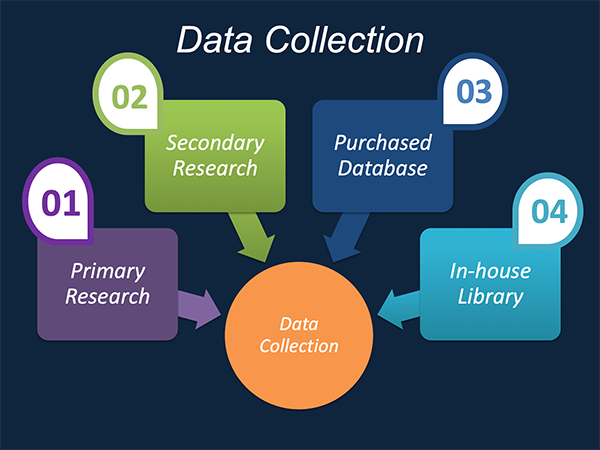
Data Synthesis: This stage includes the evaluation and assessment of all the data acquired from the primary and secondary research. It likewise includes in evaluating the information for any disparity watched while information gathering identified with the market. The data & information is gathered with consideration to the heterogeneity of sources. Scientific and statistical methods are implemented for synthesizing dissimilar information sets and provide the relevant data which is fundamental for formulating strategies. Our organization has broad involvement with information amalgamation where the information goes through different stages:


Market Formulation & Deduction: The last stage includes assigning the data & information in a suitable way in order to derive market size. Analyst reviews and domain based opinions based on holistic approach of market estimation combined with industry investigation additionally features a crucial role in this stage.
This stage includes with the finalization of the market size and numbers that we have gathered from primary and secondary research. With the data & information addition, we ensure that there is no gap in the market information. Market trend analysis is finished by our analysts by utilizing data extrapolation procedures, which give the most ideal figures to the market.
Data Validation: Validation is the most crucial step in the process. Validation & re-validation through scientifically designed technique and process that helps us finalize data-points to be used for final calculations. This stage also involves with the data triangulation process. Data triangulation generally implicates the cross validation and matching the data which has been collected from primary and secondary research methods.





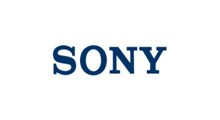

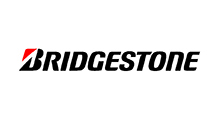

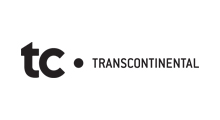















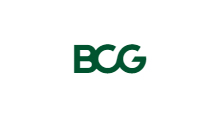




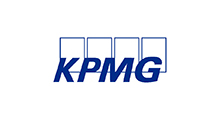




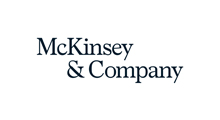

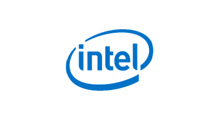







Free Customization
Countries can be added on demand
Free yearly update on purchase of Multi/Corporate User License
Companies served till date

We serve our customers 24x7 for 365 days through calls, emails and live chat options.

Huge database of exceptional market reports bringing market intelligence to your fingertips.

SSL enabled, we offer you various secured payment options for risk free purchase.